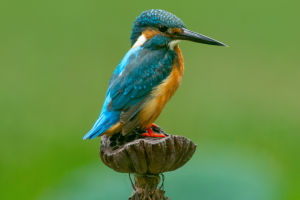Oriental white storks are large, majestic birds that are native to East Asia. These stunning birds are known for their stunning white plumage, striking black wingtips, and long, pointed bills.
1. Habitat
Oriental white storks are typically found in wetlands, riverbanks, and rice paddies across East Asia, including China, Japan, and Korea.
These birds prefer areas with shallow water and tall vegetation, where they can forage for food and build their nests.
Oriental white storks are migratory birds, and during the winter months, they often travel to warmer areas in Southeast Asia.
2. Behavior
Oriental white storks are known for their graceful, soaring flight and their ability to travel long distances. These birds are typically solitary, although they are known to form small groups during the breeding season.
Oriental white storks are omnivores, and their diet consists of a variety of food sources, including fish, frogs, insects, and small mammals.
These birds are skilled hunters, and they use their sharp eyesight and long bills to catch prey in shallow water.
3. Breeding
Oriental white storks typically breed during the spring and summer months, and they build their nests in tall trees, cliffs, or on man-made structures.
The male stork will typically bring materials to the female, who will construct the nest. The female will lay two to five eggs, which are incubated for around a month.
Once the eggs hatch, the parents will take turns feeding and caring for the chicks until they are ready to fledge and leave the nest.
4. Conservation Status
Oriental white storks are currently listed as an endangered species by the International Union for Conservation of Nature (IUCN). The primary threats to these birds include habitat loss, pollution, and hunting.
In many areas, wetlands and rice paddies are being drained or converted into agricultural land, which has led to a decline in available habitat for these birds.
Pollution from pesticides and other chemicals has also hurt Oriental white stork populations, as it can affect their food sources and lead to health problems.
In addition, hunting and poaching of these birds for food and traditional medicine have also contributed to their decline.
Conservation efforts are underway to help protect and conserve Oriental white storks. These efforts include habitat restoration, captive breeding programs, and education and outreach to raise awareness about the importance of these birds.
Some communities have also established stork villages, which provide protected areas for the birds to breed and live. These villages also provide economic benefits to local communities through ecotourism and other activities.
These birds face several threats, but with continued conservation efforts and public awareness, we can help protect and conserve these beautiful birds for generations to come.


